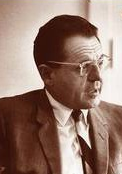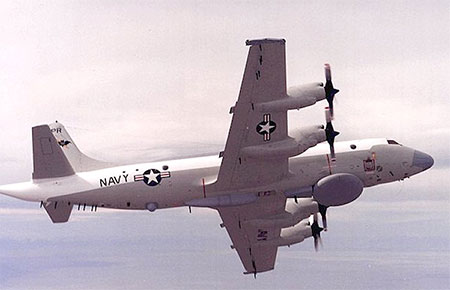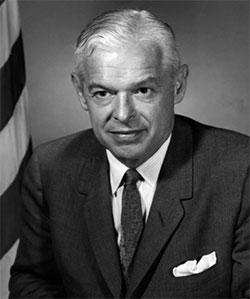
(Panoramic View of the Naval War College campus at Newport, Rhode Island).
Willow was quiet that afternoon. It was a bit early for Old Jim to limp down the block for happy hour, and Mac Showers and I had were the only customers inside. A couple tables were full out on the patio, but the sultry August weather had everyone at a low ebb. If there were ceiling fans inside, the dust motes would have danced in the breeze. it would have been a setting out of any classic film noir movie. Mac was in an aloha shirt, no jacket, and I was still in my work clothes. We ere talking about the early 1960s, times that we overlapped in this world and which, on a good day, I vaguely recall. Behind the bar was Tex, the former Marine who stands about six two and has put on a little weight since he got out, but is always jovial and usually seems happy to see us. Tex was an interesting guy. He has some sort of a sinus problem that causes him to snort once in a while, and a cheerful indifference to the niceties of some social conventions. Which led to an unusual transaction at the bar one afternoon that will have to remain between the two of us.
But I was not there for commercial activity, regardless of how gratifying. I wanted to get through Mac’s time in the Y1 organization and get back to the Pacific, where I had some major questions to ask. So, without much ado, I launched right into it with my trusty pen in one hand and a glass of almost-Happy Hour white wine in the other. “So, with part of your organization colocated with NSA, you must have had a lot of interaction with The Fort.”
Mac nodded in agreement. “There were many interesting liaison activities that I conducted as Yl with NSA, some on very friendly and beneficial terms, not always at loggerheads with them, like the submarine program seemed to be. One at which I am not prepared to go into detail was the attempt between the Navy Research Laboratory and ONI on the one hand and NSA on the other to try to understand and capture the Soviet short-signal a burst transmission — which was just coming into use in the late ’50s, and surprising to say, we did succeed with great satisfaction in doing that. That was when I first met Dr. Gene Fubini, who NSA called in by NSA as a consultant to try to understand the electronic mechanics of the signal. I appreciated from the outset that Gene was a genius in these matters, and he and I subsequently became very close friends in many endeavors that the Navy had underway. He, of course, took up positions in the Pentagon — DDR&E, etc. — and I might comment that he was also is my neighbor, just around the corner when I was still in the house in North Arlington.”

(Dr. Eugene Fubini, the legendary Navy electronic wizard).
“I remember the di-graph for the classification, Admiral. So, you were still doing SIGINT in Y1?”
“We did in the organization, yes, absolutely. You could not get away from it.”
“That makes sense, since Naval intelligence has always been focused to a large degree on being able to locate shipborne radars and communications. It was our bread and butter and still is.””Okay, let’s move on to my detachment from Yl in the summer of 1960, relieved by Captain John Q. Edwards, who has subsequently written in the Quarterly about some of his experiences in Yl. I was selected to attend the senior course at the Naval War College in Newport, which I did.
“I love military higher education,” I said with a laugh. “Were you a Commander or Captain?”
“I had been deep-selected for Captain, but I only made my number days before being detached from the Pentagon. I was happy to arrive at the War College in Newport as Captain rather than as a Commander, which was useful from the standpoint of getting better quarters and accommodations. I looked on my year at Newport as a sabbatical after all hard work and long Pentagon hours. It turned out not to be so relaxed, because I became so enamored with the academic community, and I got reintroduced to a delightful library where I could go and contemplate the things I had seen. The library at the War College is open 24 hours a day. You can go there any time to read or research, or whatever. Each student, of course, was assigned the writing of a term paper. My term paper was on the general subject of “Soviet Submarine-Launched Cruise Missiles,” which were just coming into the inventory and in testing testing stages at that time. So I did a research paper on those for which I fortunately got an outstanding grade. I had some help from my old shipmate Art Newell, who was the intelligence specialist assigned to the War College faculty at the time, and coincidently was also my faculty· advisor. But the War College turned out to be truly a delightful experience.”
“I never had to worry about earaly selection. But I agree. I felt the same way about the Industrial College when I finally got a chance to go to school. Who would have imagined getting full pay and allowances while getting your masters degree?”
“The War College was not a degree-granting institution then. They worked out something with the Salve Regina College across the road to accept the War College curriculum as meeting their standards for a degree later, but it didn’t exist then. Higher military education was certainly a change of pace for me and the family. We were at Newport when the Bay of Pigs raid occurred.”
“1961, right? That That would have been the Cuban Crisis period,” trying to get my recent history straight. “The Cuban Missile Crisis was in 1962. The Bay of Pigs was right after JFK came into office, which would have been January of that year.”
“Yes. I was at the War College at the time of the Bay of Pigs. John Edwards was in Yl, because he mentions some of this incident in his account. I also was at the War College when the two Brits defected.
“Burgess and McLean, right?”

Mac gave me a thin smile. “At the time, I was absolutely astounded to read The New York Times about the Soviet accounts of the debriefings in Moscow after they arrived in Moscow. That was really the first time that U.S. and U.S./British SIGINT activities were openly made known to the Soviets, as far as we knew.”
“We seem only to keep secrets from the people who pay for them. The Soviets had moles everywhere, and there was not much they did not have. Down through the years, we have certainly had a lot of people willing to give things up to them, either out of ideology or for cash.” Mac nodded gravely.
“Yes, it was all printed for the general public. They were absolutely astounding accounts. I was sitting up in Newport reading about all this, knowing I was going back to the Pentagon to head “Y” Branch and deal with what had been exposed to the Soviets. Anyway, the year at Newport was interesting. That was the year that John Kennedy was elected. One of our speakers at the War College was Paul Nitze, who at that time was campaigning for John Kennedy. I remember his talk about naval activities and naval operations. During the question and answer period, there had just been an incident where a Soviet SIGINT trawler had attempted to recover a missile being tested off Cape Canaveral. And the question was asked of Paul Nitze, who was preaching the more aggressive nature of military operations that would come into being during a Kennedy Administration. One of the questions was, “If you were Secretary of the Navy, what would you have done about that SIGINT trawler that attempted to recover the missile?” And he shot back, “I would have sunk the son-of-a-bitch!” And he got a standing ovation. Two or three hundred students in the auditorium, very impressive then, and of course, Paul Nitze later did become Secretary of the Navy. I don’t recall him sinking any trawlers, though.”

(The Honorable Paul Nitze as SECNAV).
“The OpNav Staff must have told him there was a State Department?.”
“”Right. Among other things. Anyway, on completion of my War College work, I was ordered back to the Pentagon to relieve Captain Fred Welden as head of 1Y Branch. I reported in August 1961 and was delighted to be there. I felt that I had finally arrived at the epitome of OPINTEL in the Navy and was in the billet I had long admired and sought after.
“This was in the D-ring on the fifth floor of the Pentagon?
Mac nodded. “The D-ring on the fifth floor. The area was blocked off at both the 7th and 8th corridors, I believe. We had an enclosed hallway in which we had the parts of “Y” Branch that were not at The Fort: Y-2, Y-3, and Y-4 .
“What did each of the groups do?” I asked, taking a sip of wine and letting the pen rest on the bar where it was safe.
“Well. Y-1, or the Naval Field Operational Intelligence organization was still at Fort Meade, under John Edwards. Y-2 was responsible for briefings to the Chief of Naval Operations….”
“What we knew as CNO Intelligence Plot. Jake tried to detail me there one time.”
Mac nodded, “We called it that, too. I’m trying to distinguish between Y-3 and Y-4.” His face was screwed up in thought. “Y-4 was ELINT and was responsible for the peripheral collection activities, mainly of the VQ squadrons- the electronic collection P-3 Orion aircraft. This was really the Washington contact point over the activities of the VQ squadrons, and Y-4 was mainly manned by aviators that had been in the VQ squadrons and understood the avionics of flying those airplanes. Y-3 then, I can’t recall. It might have been collection management.” \
“You had this whole empire?”
“Yes I did. The whole shooting match, and I should be able to recall. It seems to me that Y-3 had something to do with collection activities involving the U-2 because, on this tour of duty for the first time, I was briefed among other things on the U-2 operation and also, before the tour was over, on the advent of satellite operations. They were collecting photography of military installations in denied areas.”
“Which would have been useful before Gary Francis Powers was shot down over the Soviet Union. That is about as denied as you can get.”
Mac smiled. “That was why we moved things onto low earth orbit. Not that many Russians there in those days.”
“And now we get our rocket engines from them.”
“It is a strange world, isn’t it?” asked Mac as he contemplated his Virgin Mary.
Copyright 2017 Vic Socotra
www.vicsocotra.com
